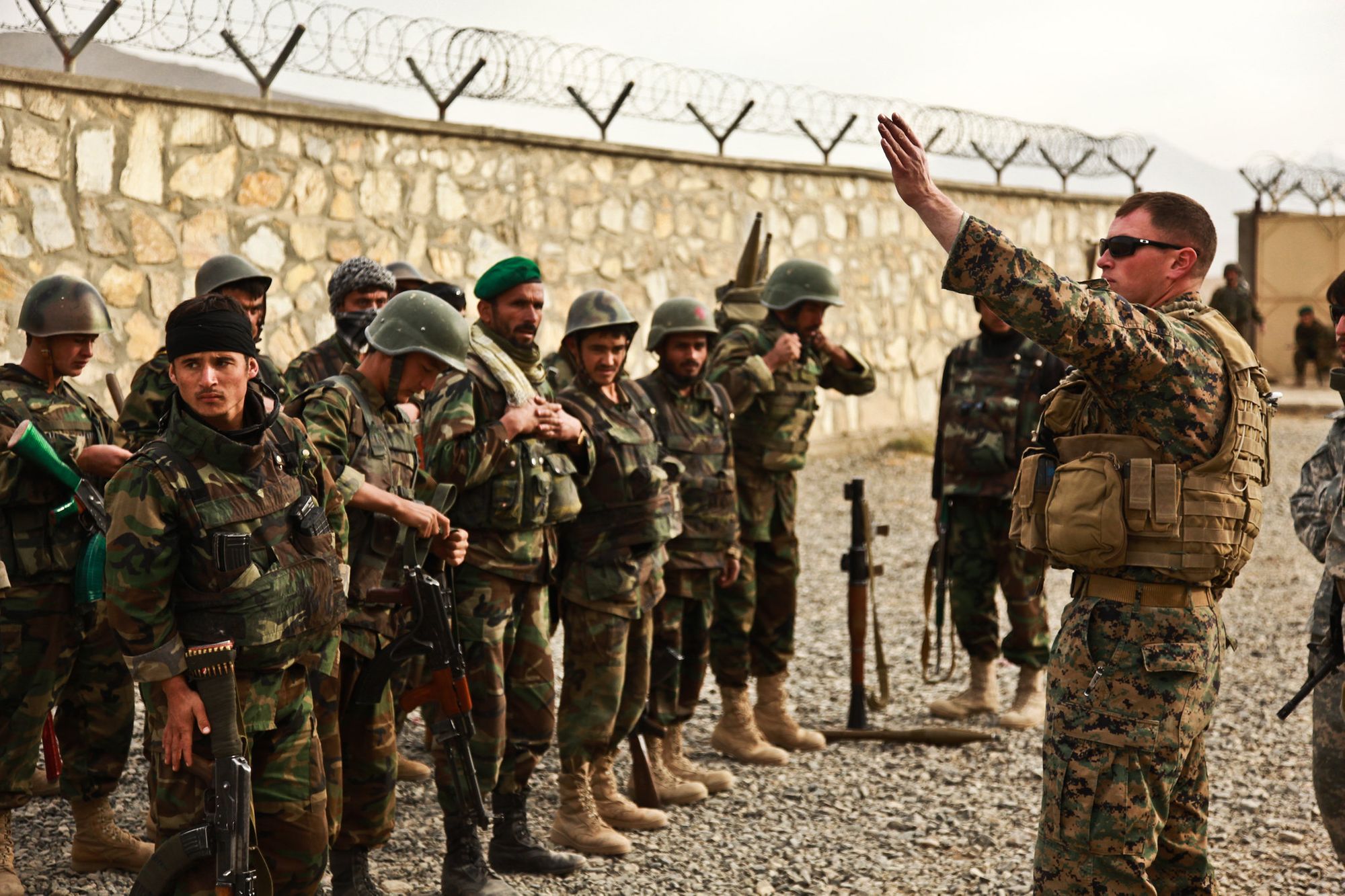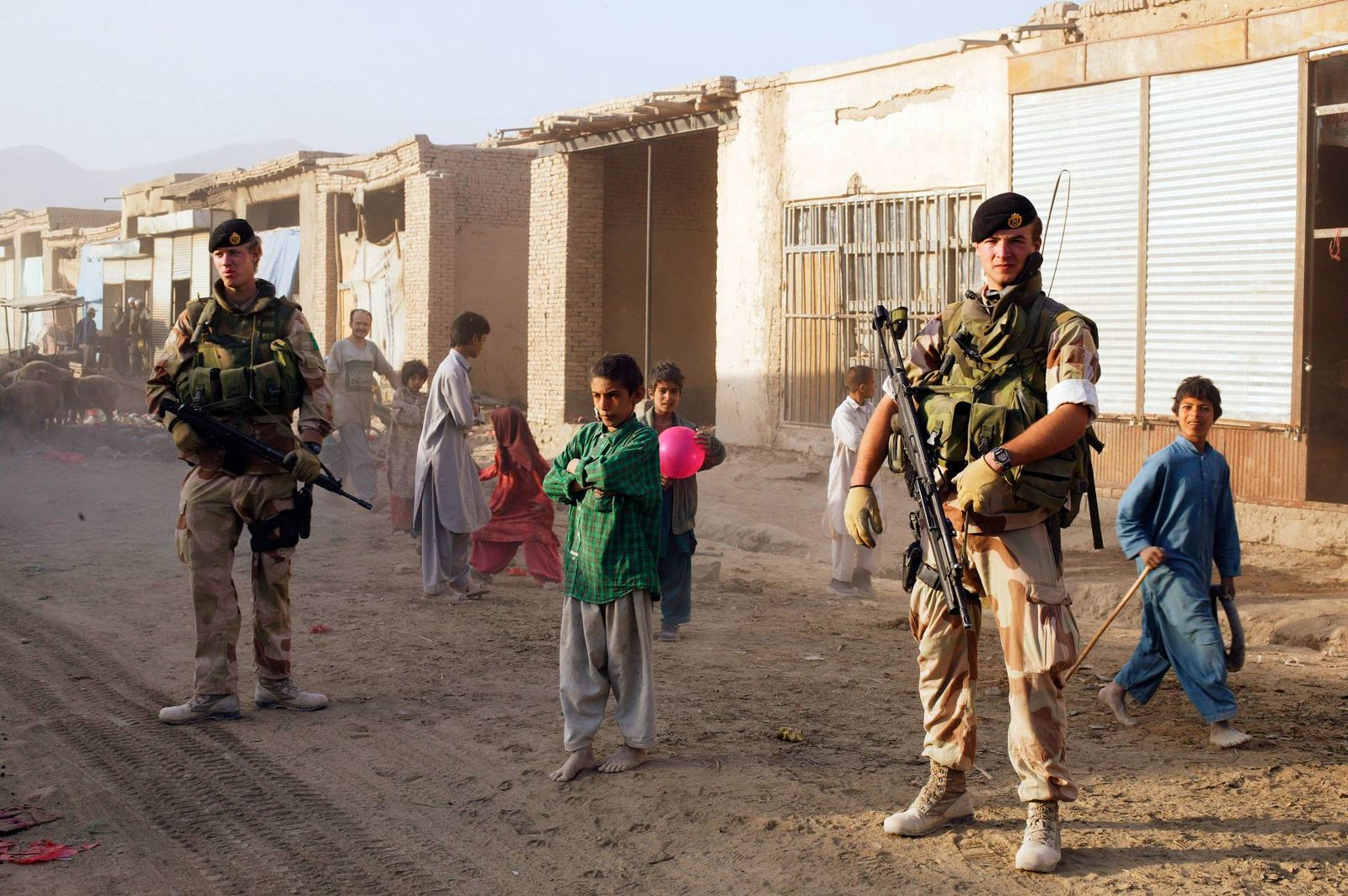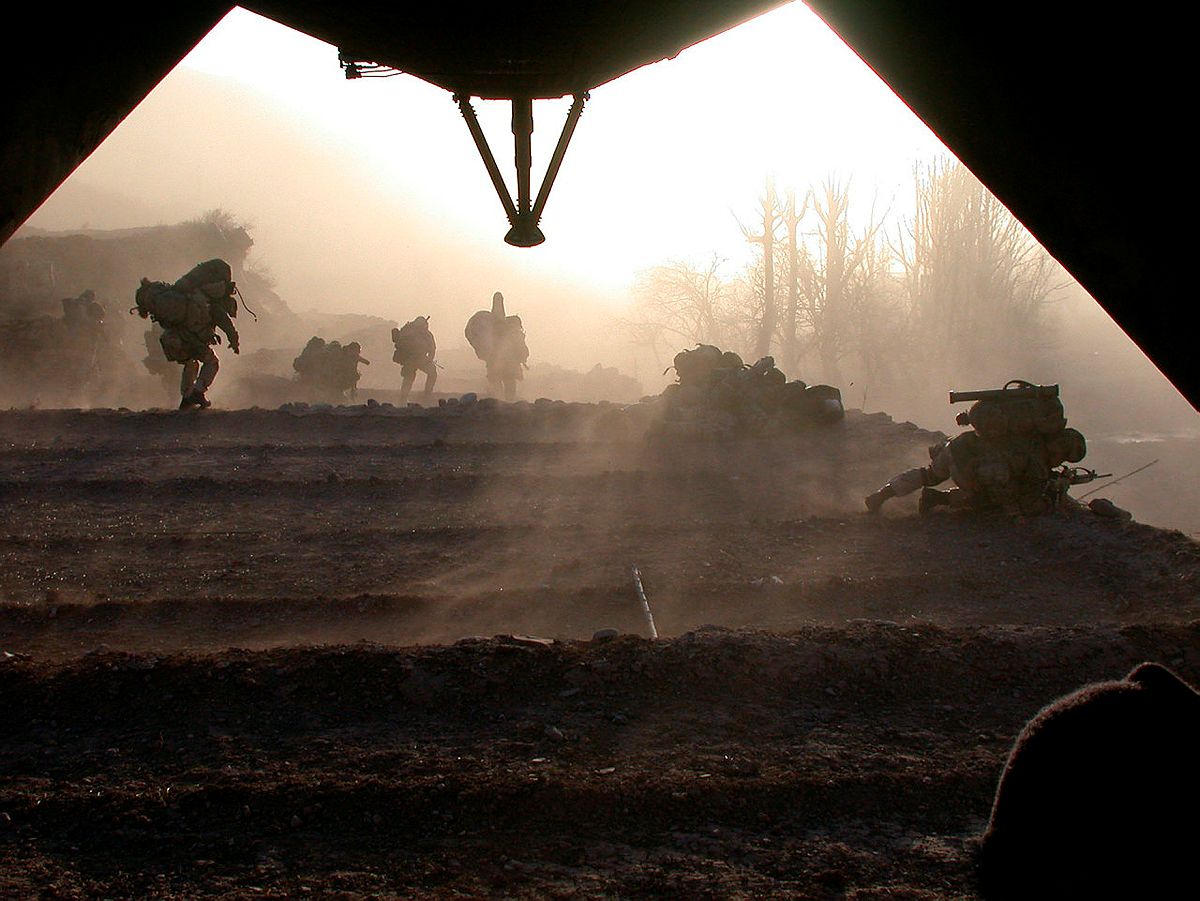The following ‘think piece’ was written for the leadership team of what, at the time, was United States Marine Special Operations Commando's (MARSOC) Foreign Military Training Unit (FMTU). Under discussion in 2006 was whether to keep operators whose mission would be to advise separate from operators who would be responsible for performing direct action (DA) missions. Basically, could and should the same individuals do both? In play, too, was the issue of whether Marine Special Operators would stay distinctly Special Operations Forces (SOF) over the course of their careers (like Army Green Berets and Navy SEALs) or whether, as Marines, they should have to rejoin the fleet periodically as all Marines traditionally had been required to do.
At the time, it seemed that MARSOC was leaning toward keeping its advisors (and FMTU) separate.
Why firewall?
Foreign Internal Defence (FID) and DA appeal to very different individuals, require very different skill sets, unfold along very different timelines, and offer markedly different rewards.
One way to draw the distinction between FID and DA is to describe FID as the application of armed finesse. DA is the application of armed force.
DA missions tend to be quick, clean, and quintessentially military. They appeal, almost by definition, to people who prefer the direct over the indirect approach. Because FID missions are slow, messy, and invariably political they typically frustrate people who prefer the direct approach. This has all sorts of implications for who should command which types of units, never mind who should serve in them.
DA missions typically require teamwork among Americans against non-Americans. Needing to have or develop empathy for the locals is rarely critical and can sometimes be detrimental to the mission. Being proficient at DA also demands rote practice of a fairly limited, but highly synchronized set of skills. Ideally, ‘team’ responses need to be automatic or, better yet, autonomic.
Youth and physical vigor are critical to DA. An argument could probably be made that it’s not only useful, but essential that individuals be wound tight, even spring loaded.
In contrast, FID missions require patience, endurance, maturity, and considerable reserves of mental stamina. At the very least, FID missions involve participants in local politics; local (never mind capital city) politics anywhere in the developing world are messy. For this reason, anyone assigned to a FID mission should like, or at least be able to demonstrate genuine interest, in the locals and should have no problem with spending more time with them than with fellow Americans.
DA doesn’t just seduce youth who, more often than not, are drawn to action rather than the idea of training someone else’s forces, but DA invariably seduces those in command – and especially those in senior command. This is for a host of reasons, some of which are obvious, some of which are probably sub-conscious: pressure from on high to get things done; easily quantifiable measures of effectiveness (MOE) for DA vs. FID (e.g. body counts; bullets expended); visible proof of performance – especially when commanders visit units in training or downrange; budget costs that are easier to justify (e.g. bullets; gear). In short, training for, execution of, and results are all far easier to ‘see’ when it comes to DA than FID – and the correlations between training, execution, and results are also far more visible, in no small part because they’re direct.
In the SOF community DA has historically always trumped FID for resources and attention. Indeed, throughout the military the hierarchy is no different: armed force trumps armed finesse trumps unarmed finesse. This is one reason that civilian affairs (CA) and psycological operations (PSYOP) have always been treated as unwanted stepchildren in SOF (they engage in unarmed finesse). It’s also why more resources have flowed to Tier 1 units (which engage solely in DA). FID represents the squishy middle.
I don’t think it’s too much of a stretch to draw the distinctions between DA and FID this way: DA appeals to action junkies and individuals who prefer seeing the world in black and white and are result-oriented. They revel in tactics and overcoming tactical obstacles. They don’t have the patience to sit in some fly-blown village somewhere training foreign troops in basic tactics. Ironically, individuals who enjoy FID duty, even if it’s just to teach basic tactics, are likely to be as interested in strategy and understanding the big picture as they are in the local culture of the people they’re training. In other words, they’ve got to be able to be both broad-minded and focused, and able to shift gears situationally and on their own should the situation suddenly change.

Special Forces (SF) has long talked as though it regards unconventional warfare (UW) as its umbrella mission and doctrinally says that UW encompasses FID which encompasses DA. But actions – and where the money flows – speak louder than words. I know very few SF 0-3s, 0-4s, and 0-5s who have deployed since 9/11 who don’t complain about the resources flowing to Joint Special Operations Command (JSOC). This has had, and continues to have, a debilitating and demoralizing effect on those who firmly believe that indirect action (and FID) have critical roles to play. They regard themselves as underdogs. For officers this is especially problematic since, for career progression purposes, they often wind up doing what they believe their commanders need to see: swift results. Ergo, even in the field DA is trumping UW, never mind FID. It’s certainly more than evident in classes full of SF officers at Naval Postgraduate School (NPS) today that the divide remains serious and, I’d go so far as to say, pernicious. Even after deployments to Iraq, Afghanistan, and the Philippines there are serious splits between those who think training for DA should take up more time than training for UW. Only those who have recently come back from working with military transition teams (MiTTs) mention FID at all.
Maintaining a firewall between FID and DA is the only way to ensure that the division of labor remains congruent with where individuals’ talents and interests lie up and down the chain of command. It is the only way to leverage what already exists in terms of people’s potential and their self-knowledge – would they rather kick in doors and are they good at this? Or would they rather train locals to kick in doors and are they good at teaching them how to do that and a lot else besides? These are not interchangeable skill sets. Doing is not the same as teaching. Working with fellow Americans is not the same as helping develop foreign forces. Even if the same individuals can be made (or assigned) to do both does not mean they will either like and/or excel at both. Given the high cost of investing in SOF personnel, and very real retention issues these days, what individuals would prefer should not be considered a trivial concern. The fact, too, that there has been tension in SF since its inception over what the nobler, more worthy mission really is (FID, DA, or UW) is an indicator that this issue is not one that has been resolved by commanders or by time. I initially wrote about the DA/FID divide in the early 1990s – when it was clear, not long after SF was made its own branch, that careerism was already making DA increasingly attractive, and training for DA was starting to take precedence over training for FID. In the wake of ongoing DA-UW tensions in Afghanistan and Iraq, SF veterans have become increasingly vocal about the need for a separate UW force. Why Rothstein makes this argument in his recent book about Afghanistan, Afghanistan and the Troubled Future of Unconventional Warfare. Mike Vickers has also testified about this in front of Congress. In other words, there appears to be spreading recognition that the only long-term solution to the ‘pull’ of DA is a structural solution.
The bottom line is there will always be a natural bias toward DA. I say this for two reasons. First, DA will always trump FID in the minds of some, to include commanders and senior commanders. The more such individuals privilege DA, the less of an opportunity this grants FID to prove itself. A vicious cycle of self-fulfilling expectations thus gets going. A lot of times this is inadvertent. It’s often unconscious. But that just compounds the problems: for anyone who doesn’t think FID is particularly effective, it’ll never look as effective as DA.
Second, some of those who will be drawn to MARSOC for DA will be utterly incapable of FID. They won’t have the patience, maturity, judgment, interest, or inter-personal skills necessary to work with foreigners. But they might be outstanding at DA. More often than not, however, those capable of FID will be able to perform DA, and probably at levels close to those of DA-designated units. This, unfortunately, will make it all too easy for FID units to be used for DA and to be DA-ified over time.
In sum: separating DA and FID will help MARSOC avoid what’s occurred both in and to SF. It will also maximize talents that already exist within the Corps, and enable them to be used to maximum advantage.
How to maintain separation
Whether or not a permanent, structural firewall can be institutionalized selection, and self-selection remain two of the keys to ensuring that the right people end up in the right line of work. MARSOC needs to do five things simultaneously:
- Truth in advertising
To get the right Marines into MARSOC in the first place, the roughest, most frustrating parts of the job need to be advertised from the outset. Not even DA is ever all Velcro and black ninja suits. But FID is especially not. This needs to be made abundantly clear. Ideally, with a good sense about what FID entails, the right Marines will self-select for FID. These should be individuals who look forward to a long-term challenge, are interested in other cultures, don’t mind discomfort (physical or mental), and intuitively grasp how critical FID is as a mission. - Selection for FID units needs to be both extremely tough and very realistic
Unlike Robin Sage, periods of inaction should be built in. Throughout much of Robin Sage something is always going on. In the real world there are definite blocks of time when nothing goes on. How do selectees deal with that? What happens when what they’ve spent days training [for] goes horribly awry? The more FID-like the selection and screening for FID units, the more this will guarantee more honest self-selection. - Wash-outs from DA selection cannot be sent to FID units
I’d almost make this a blanket rule. If there is truth-in-advertising, self-selection should ensure that no one chooses DA if they’d rather do FID. MARSOC should at least try to aim for candidates who want to do either DA or FID. If there is just the taint or whiff that FID accepts DA drop-outs or rejects it will immediately stamp FID as second-rate. This will ensure it [of] becoming second choice, and will play into all of the natural prejudices and biases about DA being more important than FID described above. - Promotion rates need to be the same for individuals who specialize in FID as for those who specialize in DA
Individuals in both tracks need to be recognized comparably. Otherwise, again, the impression that DA is favored will bias the entire system toward DA, to include self-selection.
Finally, I’m sure somewhere statistics or evidence must exist regarding the perishability of shooting, sniping, and other specific DA skills. How long, for instance, are Tier 1 operators retained in Tier 1 units – why? Surely part of the answer has to do with not squandering a major investment, but once proficiency has been attained it has to be maintained. Language skills are little different. In fact, the argument can be made that nothing is more critical to FID or UW than foreign language skills. It’s worth noting that it’s not possible to sustain local versions of Arabic and tribal languages through practice with Rosetta Stone or other language aides. The only way to maintain proficiency is to keep going back to the region. These differences alone point to why FID and DA Marines won’t be – and shouldn’t be regarded as – interchangeable and why a separation needs to be built in through selection, and ideally then maintained via an institutionalized divide.
Anna Simons is a Professor Emerita of Defense Analysis, Naval Postgraduate School. She joined the SO/LIC curriculum at NPS (1998-2019) after six years as an assistant and then associate professor of anthropology at UCLA.
Foto: U.S. Marine Capt. Graham Pulliam from Los Angeles, California, assigned to Marine Embedded Training Team 1-12, provides mission details for an upcoming patrol with soldiers from the Afghan national army at COP Blackhawk, Afghanistan, Nov. 7. (Combined Joint Task Force - 82 PAO Photo by 1st Lt. Rock Stevens)







